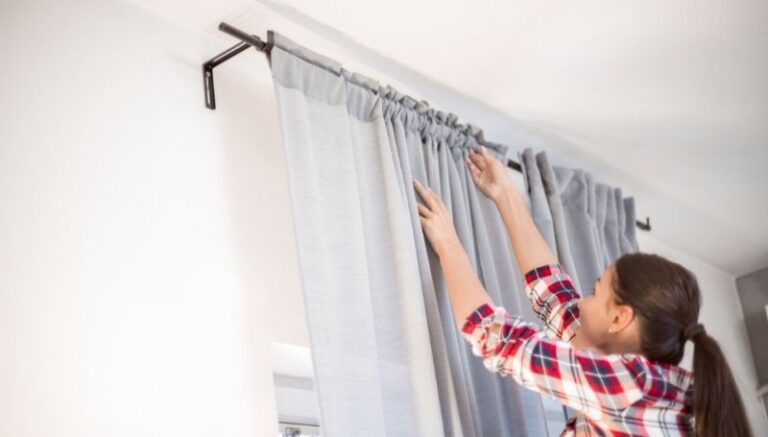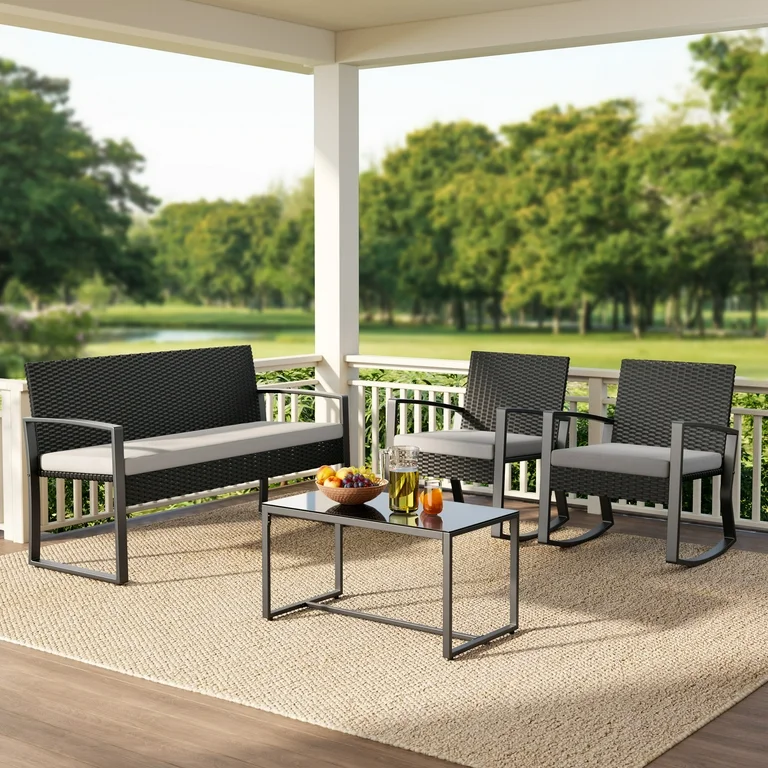Safety and Environmental Impact of Patio Furniture Covers
Patio furniture covers play a crucial role in protecting your outdoor investments from the elements. However, their safety and environmental impact are often overlooked.
This comprehensive guide will explore the importance of fire retardant materials, the safety and environmental impact of patio furniture covers, and the best practices for the disposal and recycling of old covers. By understanding these factors, you can make informed choices that contribute to both safety and environmental sustainability.

Fire Retardant Materials
Importance of Fire Retardant Patio Furniture Covers
Fire safety is a critical consideration for any outdoor space. Patio furniture covers made from fire retardant materials can significantly reduce the risk of fire hazards. These materials are designed to resist ignition and slow the spread of flames, providing an added layer of protection for your home and garden.
Types of Fire Retardant Materials
There are various fire retardant materials used in the manufacture of patio furniture covers. Some of the most common include:
Polyvinyl Chloride (PVC)
PVC is widely used due to its excellent fire-resistant properties. It can self-extinguish once the flame source is removed, reducing the likelihood of a fire spreading.
Polyurethane (PU) Coatings
PU coatings are applied to fabrics to enhance their fire resistance. These coatings can also improve the durability and water resistance of the covers, providing comprehensive protection.
Silicone-Based Treatments
Silicone-based treatments are another effective method for making fabrics fire retardant. These treatments create a protective layer that can withstand high temperatures and prevent the fabric from igniting.
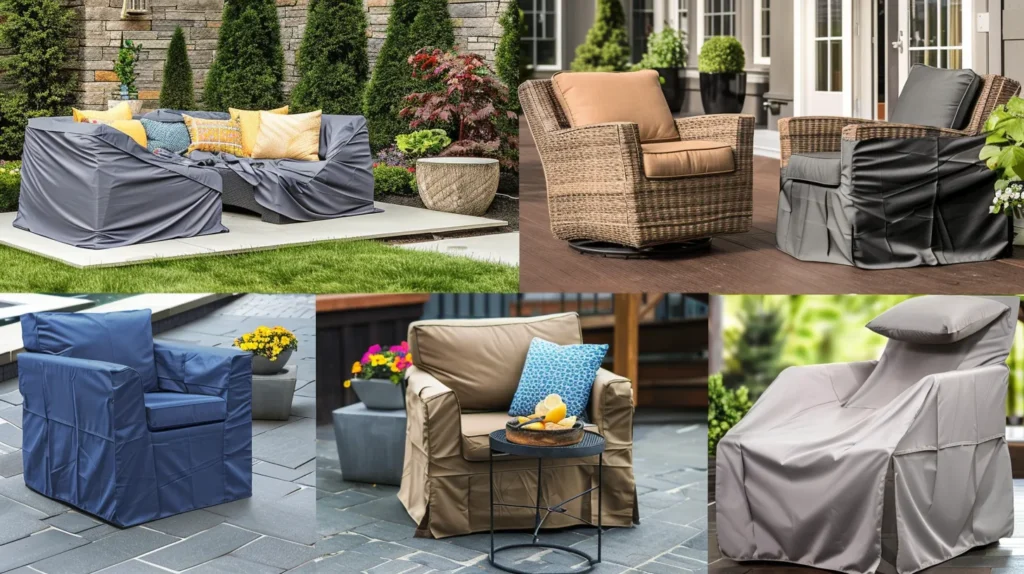
Testing Processes for Fire Retardant Materials
To ensure that fire retardant materials are effective, they undergo rigorous testing processes. These tests simulate real-world fire scenarios to evaluate the material’s performance. Common tests include:
Vertical Flame Test
In this test, a sample of the material is exposed to a flame for a specified period. The material’s ability to resist ignition and self-extinguish once the flame source is removed is evaluated.
Heat Release Rate Test
This test measures the amount of heat released by the material when it burns. Lower heat release rates indicate better fire resistance.
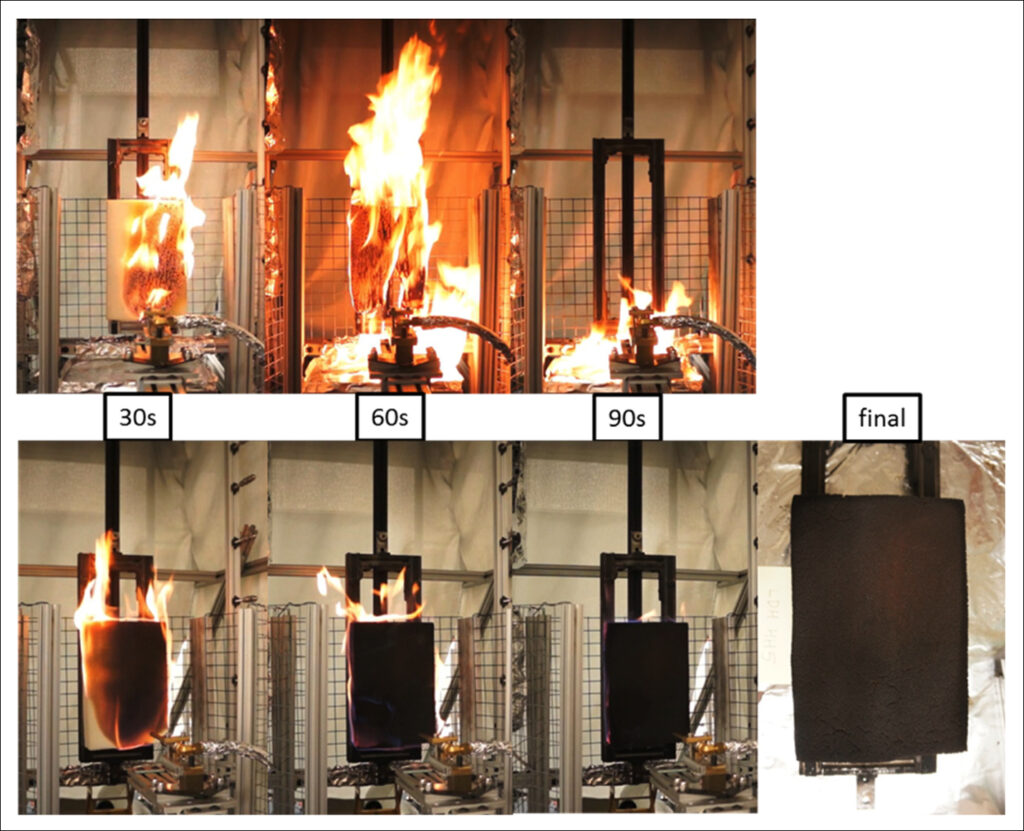
Smoke Density Test
The smoke density test assesses the amount of smoke produced by the material when it burns. Materials that produce less smoke are considered safer, as smoke can be a significant hazard during a fire.
Regulations and Standards
Various regulations and standards govern the use of fire retardant materials in patio furniture covers. Ensuring that your covers comply with these standards can provide peace of mind. Some key standards include:
California Technical Bulletin 117 (TB117)
TB117 sets the fire safety requirements for upholstered furniture, including patio furniture covers. Covers that meet this standard have been tested for resistance to open flames and smoldering cigarettes.
NFPA 701
The National Fire Protection Association (NFPA) 701 standard outlines the flame propagation performance criteria for textiles and films. Covers meeting this standard have passed rigorous testing for fire resistance.

Evolution of Fire Safety Standards
Fire safety standards have evolved significantly over the years. Early standards focused primarily on the flammability of materials. Modern standards now consider additional factors such as heat release rates, smoke production, and toxic emissions. This evolution reflects a more comprehensive approach to fire safety, ensuring that products provide maximum protection in a variety of fire scenarios.
Benefits of Using Fire Retardant Covers
Using fire retardant patio furniture covers offers several benefits:
- Enhanced Safety: Reduced risk of fire hazards in outdoor spaces.
- Protection for Property: Minimizes damage to furniture and property in case of a fire.
- Compliance: Adheres to safety regulations, ensuring legal and insurance compliance.
- Peace of Mind: Provides confidence that your outdoor area is protected against fire risks.

Environmental Benefits of Durable Covers
Longevity and Durability
Durable patio furniture covers offer significant environmental benefits. High-quality materials and construction ensure that the covers last longer, reducing the need for frequent replacements. This longevity translates into less waste and a smaller environmental footprint.

Sustainable Materials
Many durable covers are now made from sustainable materials. These materials are sourced responsibly and often include recycled content. Some common sustainable materials include:
Recycled Polyester
Recycled polyester is made from post-consumer plastic bottles. It offers the same durability and weather resistance as virgin polyester but with a lower environmental impact.
Organic Cotton
Organic cotton is grown without the use of harmful pesticides and fertilizers. It is a renewable resource and biodegradable, making it an environmentally friendly choice for patio furniture covers.

Case Studies of Sustainable Practices
Several brands have adopted sustainable practices in the production of patio furniture covers. For example, a leading outdoor furniture company uses recycled ocean plastics to create high-quality, durable covers. This initiative not only reduces plastic waste in the oceans but also provides consumers with eco-friendly products.
Reduced Waste
Investing in durable covers means fewer products end up in landfills. The manufacturing process for high-quality covers often involves stringent quality control, resulting in fewer defective products and less waste. Additionally, durable covers require less frequent replacement, further reducing waste over time.
Detailed Comparison of Environmental Impact
When comparing the environmental impact of different materials, consider factors such as resource extraction, manufacturing processes, and end-of-life disposal. For example:

- Recycled Polyester vs. Virgin Polyester: Recycled polyester significantly reduces energy consumption and greenhouse gas emissions compared to virgin polyester.
- Organic Cotton vs. Conventional Cotton: Organic cotton production uses fewer pesticides and fertilizers, resulting in lower environmental pollution and better soil health.
Energy Efficiency
The production of durable covers is often more energy-efficient compared to low-quality alternatives. High-quality materials and efficient manufacturing processes can reduce the overall energy consumption associated with producing patio furniture covers. This contributes to a lower carbon footprint and a more sustainable product lifecycle.
Water Resistance and UV Protection
Durable covers are typically designed to be water-resistant and provide UV protection. These features not only extend the life of the covers but also protect the furniture from weather-related damage. By preventing water and UV damage, durable covers help maintain the quality and appearance of outdoor furniture, reducing the need for frequent replacements and repairs.

Disposal and Recycling of Old Covers
Proper Disposal Methods
When it comes time to replace your old patio furniture covers, proper disposal is essential to minimize environmental impact. Here are some effective disposal methods:

Recycling Programs
Many communities offer recycling programs for textiles and plastics. Check with your local recycling center to see if they accept old patio furniture covers. Some manufacturers also offer take-back programs where they recycle the covers for you.
Repurposing and Upcycling
Repurposing and upcycling old covers can give them a new lease on life. For example, old covers can be used as drop cloths for painting projects, protective tarps for gardening, or even custom-made covers for smaller items.
Donations
If your old covers are still in good condition, consider donating them to local charities or shelters. Many organizations accept gently used outdoor items, which can be a great way to extend the life of your covers and help those in need.

Step-by-Step Guide to Recycling
To prepare your old covers for recycling, follow these steps:
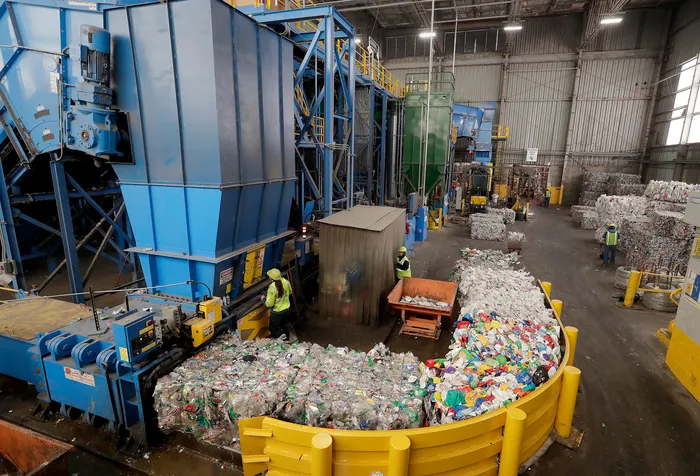
- Clean the Covers: Remove any dirt, debris, or stains to ensure the covers are in good condition for recycling.
- Check Local Guidelines: Verify the recycling guidelines in your area to ensure the covers are accepted.
- Disassemble If Necessary: If the covers have multiple layers or components, disassemble them to facilitate the recycling process.
- Drop Off or Mail In: Take the covers to a local recycling center or mail them to a manufacturer that offers a take-back program.
Recycling Materials
Understanding the materials used in your patio furniture covers can help you determine the best recycling options. Common materials and their recycling processes include:
Polyester
Recycled polyester can be reprocessed into new fibers and fabrics. This process involves cleaning and melting the old polyester to create new yarn, which can then be woven into new products.
Vinyl and PVC
Vinyl and PVC covers can be recycled through specialized programs. These materials are broken down and reformed into new products, reducing the need for virgin materials and decreasing landfill waste.
Environmental Impact of Disposal
Improper disposal of patio furniture covers can have significant environmental consequences. When covers end up in landfills, they can take decades to decompose, releasing harmful chemicals and greenhouse gases in the process. By choosing proper disposal methods, you can help mitigate these impacts and contribute to a more sustainable environment.
Global Impact of Improper Disposal
Improper disposal of outdoor furniture covers can contribute to global environmental issues. For example, discarded plastic covers can break down into microplastics, polluting oceans and harming marine life. By recycling and repurposing old covers, we can reduce the amount of waste that ends up in landfills and oceans, protecting ecosystems and promoting a healthier planet.

Benefits of Recycling
Recycling old patio furniture covers offers numerous benefits:

- Resource Conservation: Recycling conserves natural resources by reducing the need for new raw materials.
- Energy Savings: The recycling process typically requires less energy compared to producing new materials from scratch.
- Pollution Reduction: Proper recycling reduces pollution associated with manufacturing and landfill waste.
- Economic Benefits: Recycling programs create jobs and support the economy by generating demand for recycled materials.
Conclusion
Patio furniture covers are essential for protecting your outdoor furniture, but it’s important to consider their safety and environmental impact. Choosing covers made from fire retardant materials can enhance the safety of your outdoor space, while durable covers offer significant environmental benefits.
When it’s time to dispose of old covers, recycling and repurposing options can help minimize their environmental footprint. By making informed choices, you can enjoy a safe, sustainable, and stylish outdoor living area.
FAQs
Disclosure: Our blog contains affiliate links to products. We may receive a commission for purchases made through these links. However, this does not impact our reviews and comparisons. We try our best to keep things fair and balanced, in order to help you make the best choice for you.

